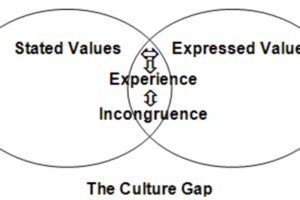The secret to extraordinary teams – is not what you think it is – and it certainly is not what leaders are being taught in business school! If you were to bet on a team of business school students beating a team of kindergartners at building the tallest structure (using spaghetti, tape, string and a marshmallow) – you would be wrong! In Daniel Coyle’s book, “Culture code” he describes an experiment done by various universities where teams of 4 business students and teams of 4 kindergartners where given this task. In dozens of trials, kindergartners built structures that averaged 26 inches tall, while business school students built structures that averaged less than 10 inches. We find this hard to believe because of our thinking….we see smart, experienced business school students and find it hard to believe they would combine to produce poor performance. We see unsophisticated kindergartners and find it difficult to imagine that they would combine to produce an extraordinarily better performance than the business school students.
Daniel makes the point that kindergartners succeed not because they are smarter but because they work together in a smarter way…….so how did the kindergartners work together? They stood shoulder to shoulder, moved quickly, spotted problems, offered help, experimented, took risks, noticed outcomes which then led to effective solutions. They were never competing for status, simply working together energetically to achieve their shared goal.
In contrast, how did the business students work together? They strategised, planned and then decided on the best route to take. Whilst they appeared to be collaborating, they were actually “managing status” (who is in charge, is it okay to criticize someone’s idea, what are the rules here), which means their behaviour was riddled with competition, inefficiency and hesitation.
Daniel summarizes the 3 skills the kindergartners had over the business students, which all strong cultures have too:
Skill 1: They felt safe (safe to say what they saw, what was working/not working, safe to experiment and fail). Their focus was their shared goal.
Skill 2: They were able to be vulnerable (this is usually only possible when the first skill is in place – safety). When everyone is able to openly share what they see/feel/observe without the fear of judgement or competition – then we can solve problems quicker, see the bigger picture more clearly and together find solutions that are infinitely better than we could on our own or if we were holding back.
Skill 3: They were clear on their shared purpose and that was their priority (whilst the business students knew what had to be done, they wasted a lot of time on managing their status, which means their priority was their status and competition, as opposed to their shared purpose).
To create an environment that feels safe, where people can be vulnerable and prioritize their shared purpose – there are a few things we can start doing:
- Create a clear vision with your team, so they can see where the team is going and how their role contributes to that vision. Define what your team’s highest values are. This will guide decision-making and how everyone will behave on your way to achieving your vision
- As a leader, simply create the space for people to be themselves. To feel safe speaking up, taking risks, being vulnerable.
- Create self-managing, cross-functional teams. Everyone self-organises around a project, based on their strengths and expertise. Decision-making happens at the level where the problem is identified. Innovation happens dynamically across the business
- Radical transparency. People give direct face to face feedback continuously
- Reflect and adapt continuously. Look at your results weekly, understand what is happening and what the bigger picture is. What is getting in the way? What is working well? What needs to change? Then adapt what or how you are doing things collectively to get the result you want.


